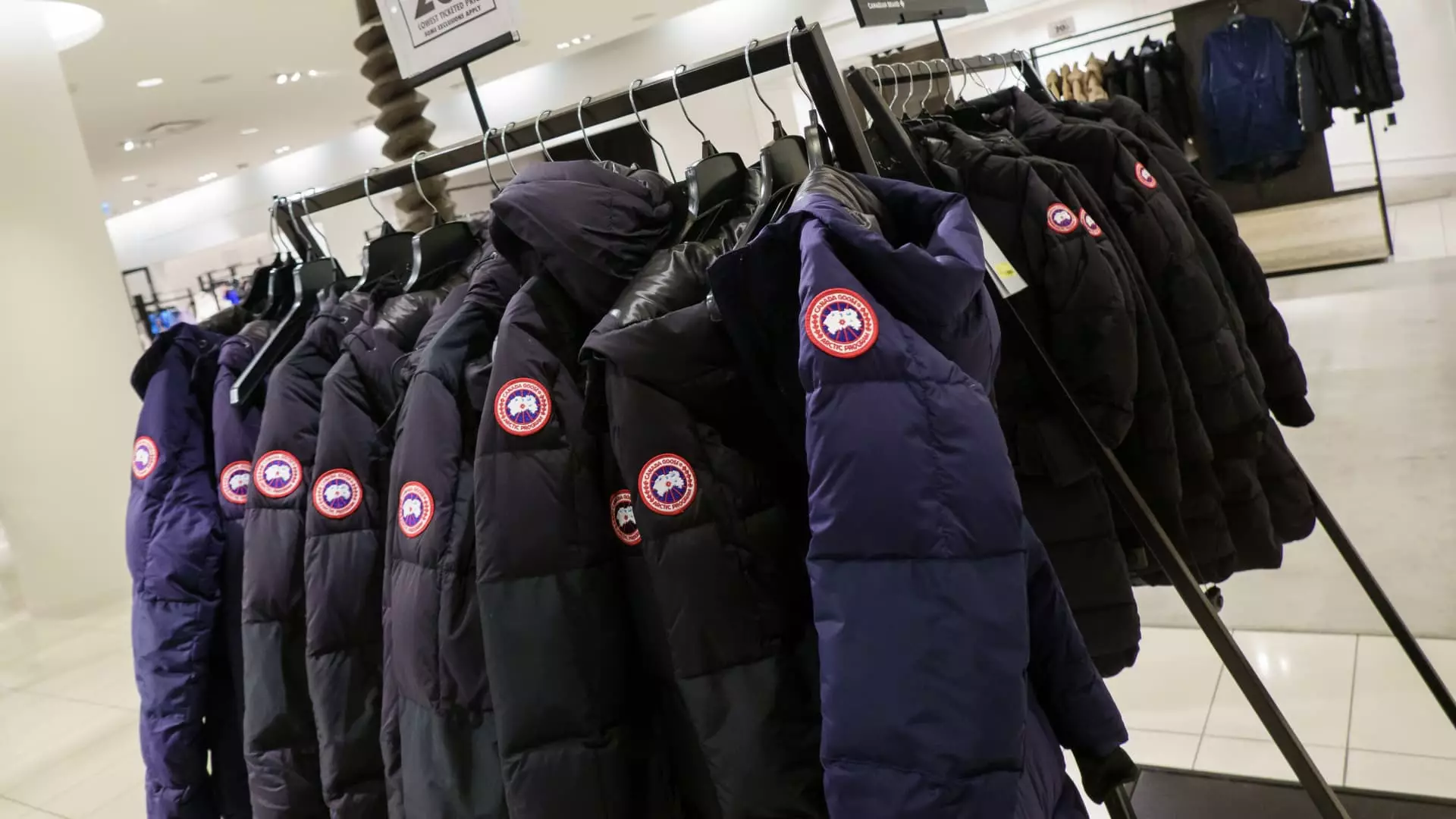In an exhilarating turn of events, Canada Goose shares surged by nearly 20% following a fiscal fourth-quarter earnings report that exceeded analysts’ expectations. However, this jubilation is tempered by the looming specter of uncertainty, a narrative all too familiar in the luxury retail sector. The company’s decision to withhold its financial outlook for 2026 due to “macroeconomic uncertainty” raises alarm bells. A marketplace characterized by unpredictable consumer behavior and global trade turmoil serves as both a backdrop and a hurdle for the Canadian brand best known for its high-end winter apparel.
Despite a stellar earnings report—adjusted earnings per share climbing to 33 Canadian cents against a forecast of 23 cents, alongside revenues of CA$384.6 million—the company’s management cautioned investors about the volatile landscape. Such mixed signals exemplify the precarious balancing act that Canada Goose must maintain: spirited growth with a cautious gaze on market dynamics. History echoes through the corridors of this firm, reminding us of challenges faced in previous downturns, from the 2008 financial crisis to the COVID-19 pandemic.
A Brand’s Core Strength Amidst Turbulence
Yet, Canada Goose seems undeterred in its confidence. Chief Operating Officer Beth Clymer underscored a crucial point during discussions with investors: 75% of Canada Goose’s products are manufactured in Canada, largely insulating them from the contentious tariffs placed on imports. The assurance that the majority of the offering remains tariff-free is a palpable relief in a time rife with economic uncertainties.
Canada Goose has cultivated its brand identity through a combination of quality craftsmanship and strong narratives pertaining to warmth, durability, and Canadian heritage. CEO Dani Reiss underlined their resilience with bold declarations: “This is not the first time Canada Goose has successfully navigated uncertainty.” Such statements serve to rally the troops in volatility; however, one must ponder whether this strong rhetoric translates into long-term viability in a landscape increasingly defined by disruption and upheaval.
The Tariff Debacle and the Shadow of Unpredictability
With the remaining production emanating primarily from Europe experiencing a rise in tariffs, Canada Goose finds itself caught in a web of indirect economic ramifications. Chief Financial Officer Neil Bowden acknowledged the broader implications of these measures, citing the “indirect effect of these actions on the global economy.” Here, we witness the crux of the conundrum: while financial impact may appear limited on the surface, the potential ripple effects could be far-reaching, impacting consumer sentiment just as economically sensitive consumer spending starts to shift.
Canada Goose has risen to prominence by positioning itself in a market where luxury is not merely a label but rather an experience. However, in the broader context of the retail environment, when industry giants like LVMH and Kering report sluggish sales, the question arises: can a brand steeped in winter attire pivot deftly to year-round relevance? Attempts at diversifying the product line with non-winter apparel and innovative technologies, such as AI-driven virtual try-on features for eyewear, showcase a commendable effort to stay ahead of the curve, yet they also reflect the intensifying pressure on brands to evolve in the notoriously fickle luxury market.
The Luxury Sector’s Weakness: A Ticking Time Bomb?
The luxury sector’s current struggles paint a sobering portrait. The general weakness seen across leading brands forces a reevaluation of consumer behavior in this economic climate. Despite a 7.4% increase in revenue compared to last year, the all-time low share price reached last month—triggered by a downgrade from analysts—unveils a growing sense of discontent among investors.
The luxury market demands a level of agility that traditional retailers may find difficult to maintain, especially amidst drastic shifts in consumer preferences we are witnessing today. Canada Goose’s gambits—aiming towards diversification and enhanced digital engagement—could either be its savior or its slow descent into irrelevance as brand loyalty dissipates in the face of economic downturns and a crowded marketplace.
In the relentless pursuit of growth in challenging times, Canada Goose stands as both a beacon of resilience and a study in precarious balancing acts, maintaining its brand’s allure while daring to navigate through uncertainty. The question remains: can they hold onto their premium status, or will they be washed away amidst the rising tides of economic pessimism?

